
 |
| ||||
| Photo : Kodansha PEC ( 2,3,11,13,19 ) , Kodansha Publishers ( 4,7,8,9,10,14,16,17,18 ) |
 ( Shinmai : New Rice ) ( Shinmai : New Rice )Rice is the staple of the Japanese diet. Between September and October, the rice ripens, and soon the freshly harvested grain is available on the market as shinmai. When cooked, new rice is soft and glistening as well as faintly sweet, and people look forward to its appearance on the market each autumn. Appetites increase when the rice that forms the centerpiece of the meal tastes better. Specially marked " shinmai, " a 10-kilogram bag costs about 5,000 yen. | |||
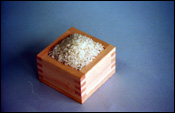 1. Shinmai | 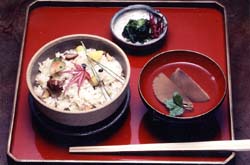 2. An autumn meal | ||
 ( Kinoko : Mushrooms ) ( Kinoko : Mushrooms )Mushrooms are another feature of autumnal eating. Filled with nutrients drawn from the forest floor, mushrooms are rich in flavor and aroma. Among them the matsutake mushroom is king. Matsutake gathered in groves of akamatsu or red pine in Japan are considered the finest in flavor and fragrance and command such a high price that most people can only afford to eat them once a year, if at all. The subtle flavor of this delicacy is often enjoyed by cooking a single matsutake, sliced into small pieces, with rice ( matsutake gohan ). Shimeji and other varieties of mushrooms freshly gathered in the wild or in nurserys are enjoyed in various preparations : boiling in soups, frying with other vegetables, or roasting. A roasted mushroom flavored with a few drops of yuzu ( citron ) or kabosu lime is a particularly savory treat. | |||
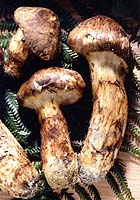 3. Matsutake |
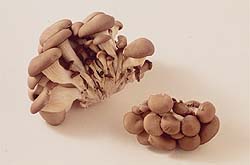 4. Shimeji | ||
|
| ||
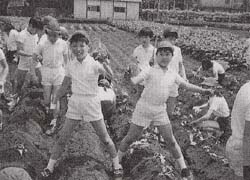 5. Satsuma-imo dig | 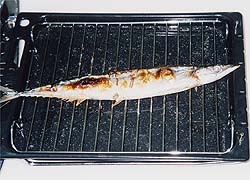 6. Sanma on the grill | ||
Autumn is the season of plentiful harvest of fruit : grapes, nashi pears, chestnuts, persimmons, and more. The sight of these colorful fruits at the grocer's display and their sweet fragrances is irresistible. Many people take this season to go to orchards and vineyards to enjoy the pleasures of picking fruits themselves to carry home and share with their friends. Persimmon trees grow in many people's gardens where the fruit turns bright orange in the fall, making persimmons one of the most familiar of fruits to Japanese. | 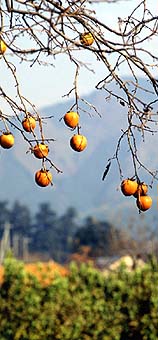 10. Kaki : Japanese persimmons are sweet and crispy and ripen before frost. | ||
 7. Budoo : Grapes | 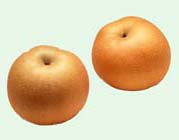 8. Nashi : Crispier and juicier than a Western pear | 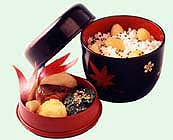 9. Kuri gohan : Rice cooked with chestnuts | |
|
Enjoying the foods of the four seasons : A sense for shun Autumn is a time when good food is in especially abundant supply, but in each of the other seasons, too, particular fruit, fish, or vegetables are at their best. Because of the frequent and regular changes of the Japanese seasons, it has been traditional since ancient times to follow the local bounty of nature's annual cycle in eating. By serving each food as it comes in season, people savored the palpable sense of the changing seasons. What is shun (  ) ? ) ?
The period during which each type of produce is at its height is called its shun. The foods in season in spring in Japan are strawberries, bamboo shoots, and asari ( short-necked clam ) amog other shellfish; for summer, watermelon, peaches, tomatoes, Japanese cucumbers, and sweet corn; those for autumn described above, and for winter, spinach, daikon giant radish, negi ( Japanese leeks ), mikan tangerines, as well as cod and yellowtail, among other fish.  In recent years there have been great advances in greenhouse farming technology, preservation of foods by refrigeration and freezing, and development of distribution networks and better, faster transportation. This means that most vegetables and fruit are generally available in supermarkets all year round. Frozen fish and other seafood products, including those caught in faraway seas, are available in quite ample amounts throughout the year. All this advanced technology, however, cannot maintain the optimal nutrition and subtle flavors of foods eaten fresh and in season. Orchard-grown fruit and vegetables from the fields is much less expensive to produce than that cultivated in
greenhouses and prices are cheaper because they come on the market in large quantities. They are also low-energy consuming, considering the extra costs that go into transportation and maintenance of hothouse-grown produce. In recent years there have been great advances in greenhouse farming technology, preservation of foods by refrigeration and freezing, and development of distribution networks and better, faster transportation. This means that most vegetables and fruit are generally available in supermarkets all year round. Frozen fish and other seafood products, including those caught in faraway seas, are available in quite ample amounts throughout the year. All this advanced technology, however, cannot maintain the optimal nutrition and subtle flavors of foods eaten fresh and in season. Orchard-grown fruit and vegetables from the fields is much less expensive to produce than that cultivated in
greenhouses and prices are cheaper because they come on the market in large quantities. They are also low-energy consuming, considering the extra costs that go into transportation and maintenance of hothouse-grown produce. Seasonal foods are closely linked, moreover, with particular events of Japan's traditional calendar as well as with favorite pastimes and pleasures, enlivening the rhythms of daily life. Throughout the ages, seasonal foods of the four seasons have been the inspiration for poetry, a rich and gentle subject for the reflection of human sensibilities. Japanese culture has continually been enriched by the
foods naturally available from its forests, fields, and seas, skillfully prepared, and tastefully served as part of ordinary daily life. Seasonal foods are closely linked, moreover, with particular events of Japan's traditional calendar as well as with favorite pastimes and pleasures, enlivening the rhythms of daily life. Throughout the ages, seasonal foods of the four seasons have been the inspiration for poetry, a rich and gentle subject for the reflection of human sensibilities. Japanese culture has continually been enriched by the
foods naturally available from its forests, fields, and seas, skillfully prepared, and tastefully served as part of ordinary daily life.
|
|
|
| ||||||
|
Amazing Workings of Nature Produce in season not only tastes its best but offers optimal nutritional value. Vegetables and fruit, for example, contain plentiful vitamins and minerals. 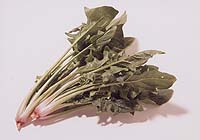 Spinach is a good example. Spinach is a winter vegetable that grows best in cold weather. A comparison of spinach grown by artificial means in the summertime with that grown naturally in the fields in winter shows that the latter is twice as high in vitamin content. The season for fish is just before spawing season when their flesh is rich in fat and protein. Shun refers to the season when the life force of plants and fish is at its height. With cell division occurring at a rapid pace, the enzymes in their tissue are at their most active. This means that such foods in season are filled with a high enzyme content that helps to strengthen and invigorate human health as well. Spinach is a good example. Spinach is a winter vegetable that grows best in cold weather. A comparison of spinach grown by artificial means in the summertime with that grown naturally in the fields in winter shows that the latter is twice as high in vitamin content. The season for fish is just before spawing season when their flesh is rich in fat and protein. Shun refers to the season when the life force of plants and fish is at its height. With cell division occurring at a rapid pace, the enzymes in their tissue are at their most active. This means that such foods in season are filled with a high enzyme content that helps to strengthen and invigorate human health as well. Foods in season, in fact, are a symbol of the marvelous mechanisms in nature that link nutritional balance to the miracle of life. For example, in winter, when the light of the sun is dimmer, spinach efficiently absorbs the sun's energy and stores it in its leaves. During this season, the leaves grow thick and dark green in color, and their flavor and sweetness increases. With weak sunlight, meanwhile, the human body requires more vitamin. Spinach, therefore, Foods in season, in fact, are a symbol of the marvelous mechanisms in nature that link nutritional balance to the miracle of life. For example, in winter, when the light of the sun is dimmer, spinach efficiently absorbs the sun's energy and stores it in its leaves. During this season, the leaves grow thick and dark green in color, and their flavor and sweetness increases. With weak sunlight, meanwhile, the human body requires more vitamin. Spinach, therefore, 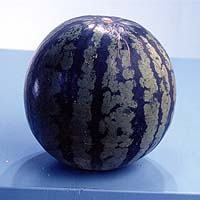 is a perfect food to provide the needed vitamins and nutrients human beings need during the short days of winter. is a perfect food to provide the needed vitamins and nutrients human beings need during the short days of winter. Then there is the watermelon, which flourishes in the most intense heat of summer in dry, uncultivated earth, harboring moisture within its thick, hard skin. The watermelon is 91 percent water and high in sugar content. Again, it is an admirable source of precisely the liquid and nutrients human beings need in the heat of summer. Then there is the watermelon, which flourishes in the most intense heat of summer in dry, uncultivated earth, harboring moisture within its thick, hard skin. The watermelon is 91 percent water and high in sugar content. Again, it is an admirable source of precisely the liquid and nutrients human beings need in the heat of summer. We are surrounded by this sort of natural bounty, which yields to us from season to season the vital energies of the natural world in its intricately linked mechanisms. Certainly it is important to think how we can best live in harmony with these mechanisms. Should we not try to be aware of and appreciate how closely we are linked to other living things, rather than constantly trying to control and conquer the powers of nature? We are surrounded by this sort of natural bounty, which yields to us from season to season the vital energies of the natural world in its intricately linked mechanisms. Certainly it is important to think how we can best live in harmony with these mechanisms. Should we not try to be aware of and appreciate how closely we are linked to other living things, rather than constantly trying to control and conquer the powers of nature? What are the best-tasting foods of the place where you live? Are there seasonal foods around you as well? What kind of nourishment do they contain? How are they prepared? How are they related to the natural environment and climate of your locale? We hope you will take a moment to think about the links between human beings and nature as they relate to food. What are the best-tasting foods of the place where you live? Are there seasonal foods around you as well? What kind of nourishment do they contain? How are they prepared? How are they related to the natural environment and climate of your locale? We hope you will take a moment to think about the links between human beings and nature as they relate to food.
|
| ||||||||||||||||||||||||
Original text : The Japan Forum Newsletter no14 "A day in The Life" September 1999.
Send feedback to forum@tjf.or.jp

 The favorite phrase for autumn, the season of harvest, is " minori no aki, " and indeed, it is the season tables are laden with a wide variety of delicious things to eat, when the rice matures and is harvested, fruit ripens, and fish taste their best. Autumn, the season of harvest that yields the rich variety of nature's abundance, is indeed the shokuyoku no aki, a season of hearty appetites. For this installment of " A Day in the Life, " therefore, we look at foods people enjoy most during this season. The following are those that Japanese traditionally associate most closely with fall.
The favorite phrase for autumn, the season of harvest, is " minori no aki, " and indeed, it is the season tables are laden with a wide variety of delicious things to eat, when the rice matures and is harvested, fruit ripens, and fish taste their best. Autumn, the season of harvest that yields the rich variety of nature's abundance, is indeed the shokuyoku no aki, a season of hearty appetites. For this installment of " A Day in the Life, " therefore, we look at foods people enjoy most during this season. The following are those that Japanese traditionally associate most closely with fall. ( Yasai : Vegetables )
( Yasai : Vegetables ) satsuma-imo ( sweet potato ), sato-imo ( taro potatoes ), carrots
satsuma-imo ( sweet potato ), sato-imo ( taro potatoes ), carrots  ( Sakana : Fish )
( Sakana : Fish ) ( lit., " autumn sword fish " ) are read irregularly for sanma. Between October and November, sanma put on fat, the amount rising from 8 to 20 percent, increasing its attractions to diners. Sanma is usually eaten salt-grilled and eaten with grated daikon and shoyu as condiments.
( lit., " autumn sword fish " ) are read irregularly for sanma. Between October and November, sanma put on fat, the amount rising from 8 to 20 percent, increasing its attractions to diners. Sanma is usually eaten salt-grilled and eaten with grated daikon and shoyu as condiments.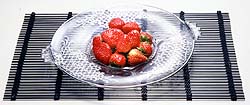

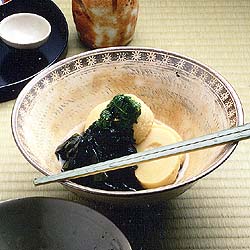
 (Spring)
(Spring)
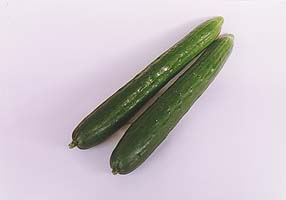


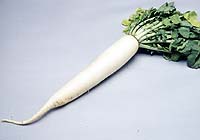
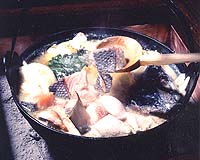

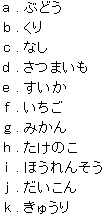
 ) mean?
) mean?





